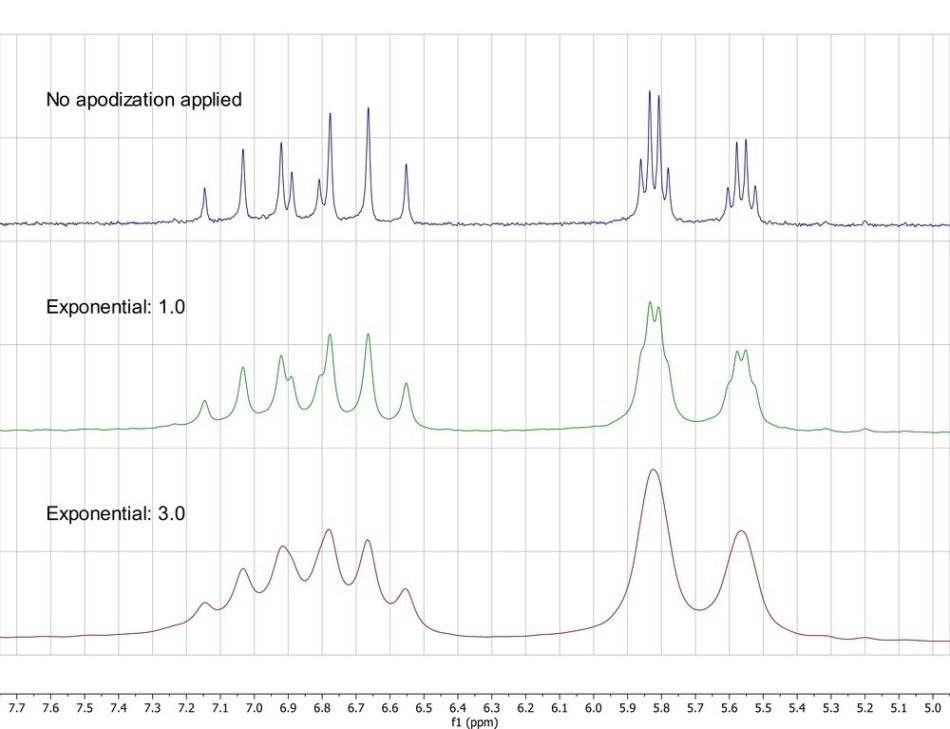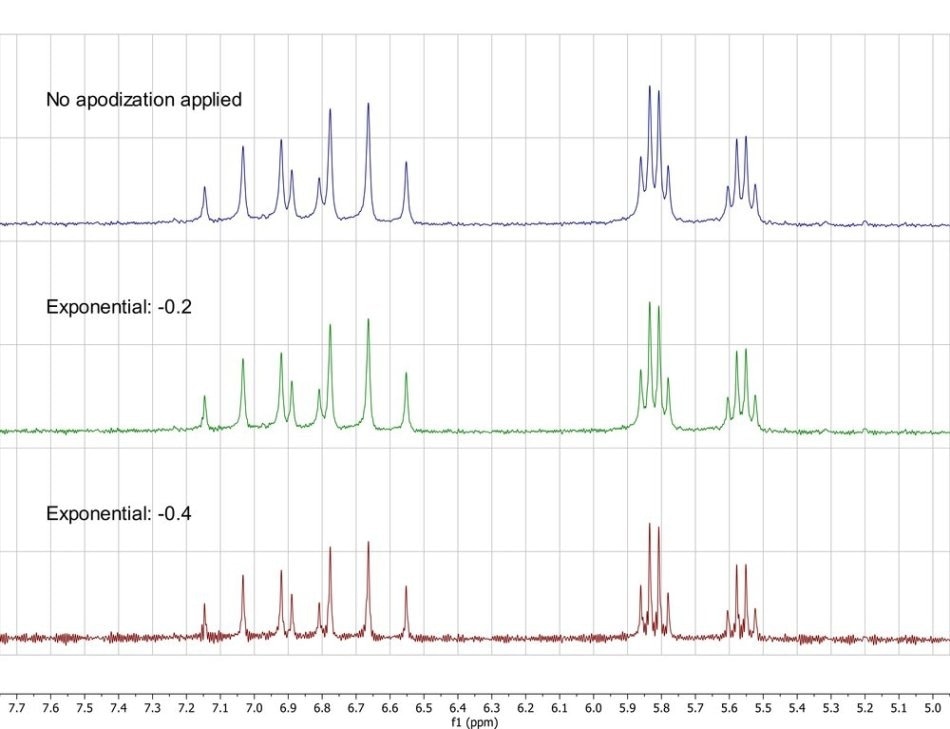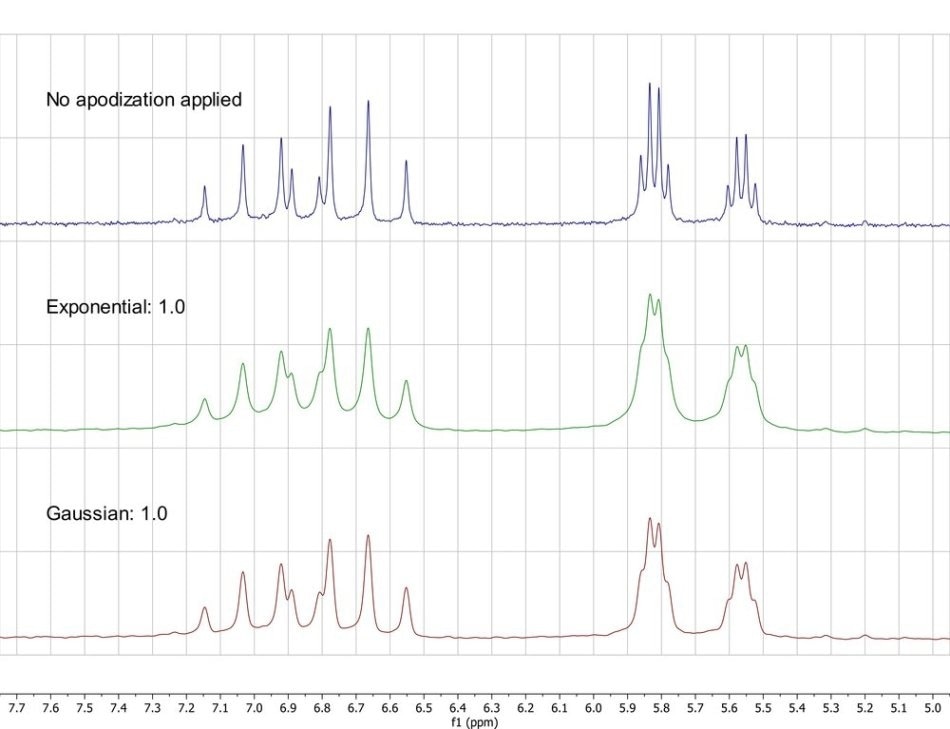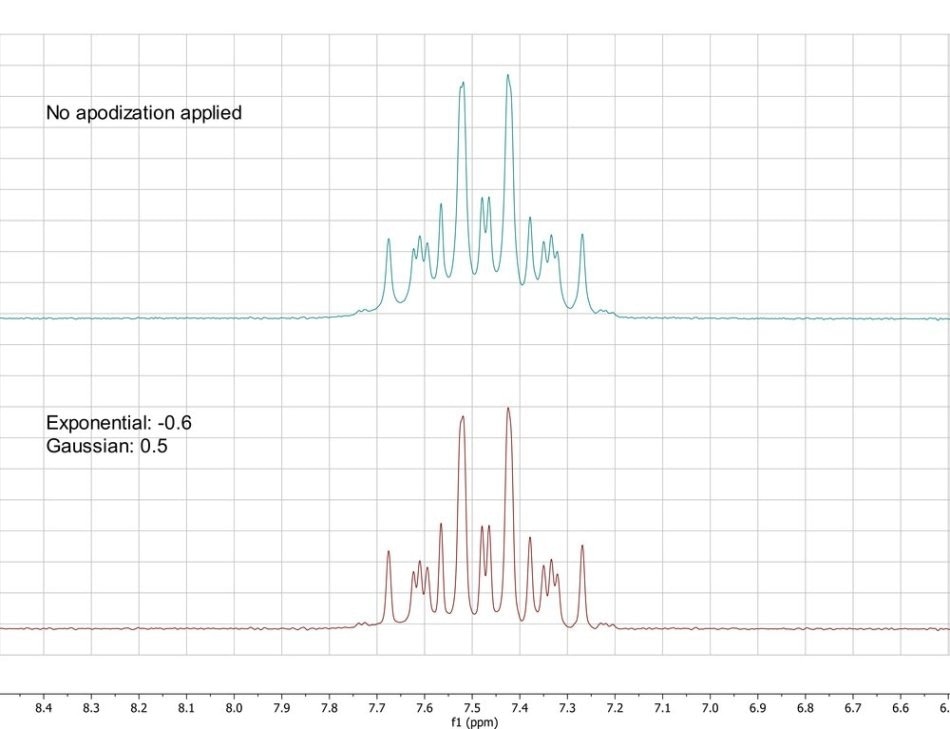Is the apodization tool in Mnova well-known to researchers? The original Greek meaning of apodization, also known as Windowing or Weighting, is “cutting off the feet.” In this case, the ‘feet’ are the leakage or wiggles that appears when the NMR signal rapidly decays to zero.
Benefits of Apodization
Essentially, apodization has the ability to improve the sensitivity (S/N ratio) or the resolution in the spectrum and to even eliminate truncation artifacts following data collection. This function is specifically useful for spectra acquired using a benchtop NMR instrument due to the lower S/N ratio than spectra acquired using high-field instruments.
Mnova allows the researcher to choose between multiple window functions that can be applied simultaneously. The tool can be accessed by clicking on the apodization button provided within the Processing ribbon, or with the help of the keyboard shortcut, W.
Application of Exponential and Gaussian Functions
When a researcher processes NMR data, the Exponential and Gaussian functions are mainly used. Although the application of a positive Exponential function increases the sensitivity of the spectrum, it comes at the cost of the resolution.

Figure 1
The application of a negative Exponential function results in the opposite effect, where the resolution is increased but the sensitivity is reduced.

Figure 2
Although the Gaussian function is similar to the Exponential function, it leads to less line broadening than the Exponential function.

Figure 3
Optimizing the Spectrum
In general, optimal results can be obtained by simultaneous application of the Exponential and Gaussian functions, which is also called the Lorentz-to-Gauss transformation. The spectrum can be improved by tuning the two parameters by introducing a positive value for the Gaussian function and a negative value for the Exponential function.

Figure 4
From the above figure, it is evident that the application of the Exponential and Gaussian functions leads to an optimized spectrum with nearly identical S/N ratio and a higher resolution.

This information has been sourced, reviewed and adapted from materials provided by Nanalysis Corp.
For more information on this source, please visit Nanalysis Corp.